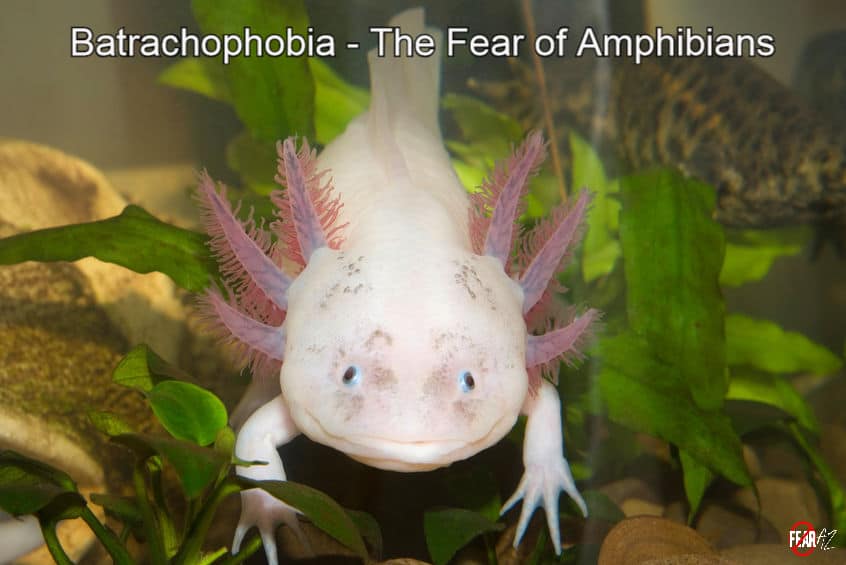Share This Article
Excessive Fear of Amphibians
Did you pretend to be sick when your science class was scheduled to dissect a frog? Do you refuse to explore certain sections of the zoo during family trips? Are you scared of going near ponds and other small bodies of water in case you might catch a glimpse of an amphibian?
Does the mere sight of toads make you sick to your stomach? Are you a fan of nature documentaries, but avoid watching videos that feature slimy creatures?
If all of these feel familiar, you might be experiencing batrachophobia, or the fear of amphibians.
But don’t fret. Batrachophobia is not as unusual as you think.
What Is Batrachopohobia?
Batrachophobia is the phobia of amphibians such as frogs, salamanders, toads, and newts. It could affect those of any age group, with symptoms varying for each person. More commonly known as fear of frogs or ranidaphobia, batrachophobia was first recorded in a 1953 dictionary of psychiatry.
Those with an extreme phobia of frogs experience severe discomfort or panic at the prospect of interacting with amphibians in any way. Even looking at an image or video clip may cause a reaction.

Phobias such as batrachophobia are often the result of trauma, coupled with genetics in some cases. Many who fear amphibians develop this fear because of incidents from their childhoods such as pranks involving amphibians. It could also be the result of a school experiment gone wrong. Brain chemistry also holds significance in the development of the phobia.
A fear of frogs may be considered irrational because of the harmless nature of frogs and toads. Often, those with batrachophobia develop secondary anxiety when their fear is mocked by others.
What Are the Symptoms of Batrachophobia?
The symptoms of batrachophobia vary from person to person. As each individual has a unique way of thinking and processing the world, this phobia can appear in different ways. However, some symptoms may be more common than others.
Fear is a physical response. Just the thought of being around amphibians is enough to trigger a fear reaction. The most common emotions surrounding these episodes are predominantly anger, guilt, and paranoia. Anxiety and fear levels can range from mild to severe and may include feelings of mild anxiety to panic attacks.
Most batrachophobia sufferers experience the following when they see a live amphibian or an image of one. Take note that they may not happen all at the same time.
Physical Symptoms
- Heart palpitations
- Nausea
- Shortness of breath
- Losing the ability to speak
- Excessive sweating
- Vertigo
- Numbness or loss of sensation
- Dizziness or vertigo
Mental/Emotional Symptoms
- Obsessive-compulsive disorder (OCD)
- Fear of fainting
- Social isolation
- Anticipatory anxiety
- Panic attack
People with a fear of amphibians may have a difficult time communicating their discomfort, so it’s important to always be aware of others and pay attention to their symptoms.
Self-Help Methods to Cope with Batrachophobia
Others may not understand why you’re afraid of amphibians, but batrachophobia (or any phobia) can have a negative effect on your mental health. That’s why it’s important to learn how to overcome this fear.
Before seeking professional treatment, find ways to deal with your phobia at the personal level. It helps to recognize unhealthy practices and work to unlearn them. Have a friendly morning check-in with yourself and your feelings.
When it comes to phobias, the mind is in a constant state of panic. Breathing exercises and meditation help calm the senses and find rationality. Find a meditation class you like either online or in person. Or, you could close your eyes and focus on a song that soothes you. A self-help podcast also makes for a great listen.
Find a hobby that helps distract you. Be it painting, baking, or weightlifting, find something that occupies your mind and keeps irrational thoughts at bay. If you keep thinking about something that scares you, your brain is sure to internalize it and cause you more mental anguish.
A great number of self-help books are available both online and in stores. With these tips, you can take concrete steps to deal with your phobia in a healthy way.
But what if these self-help strategies are not enough to overcome your fear?
Getting Professional Help
Professional treatment for batrachophobia focuses on the root of the subject. For a more long-term or permanent fix, address your concerns with a certified healthcare professional. Remember, treatment may be a long process and involves several options to choose from.
Counseling and Group Therapy
Personal counseling and support groups for those who share the same phobia are viable treatment methods. Sharing your concerns with a trained professional will help you discover the cause of your phobia while you explore ways to manage symptoms. Communication and honesty are key to successful therapy sessions.
Virtual Reality Therapy or VRT
VRT is a modern high-tech treatment based on cognitive behavioral therapy. It can be used for children and adults alike. These virtual reality simulators let you face your fears while in the controlled setting of a doctor’s office.
It subjects you to various scenarios and helps alter your reaction during the sessions by creating situations unique to your phobia. VRT regulates these situations by making adjustments or repetitions until the trigger points are reached. Hence, you are quite literally facing your fears.
Hypnotherapy or Hypnoanalysis
This method of treatment involves diving into the subconscious through hypnosis. A trained professional speaks to your subconscious and tries to trace the ingrained trauma and resulting patterns of behavior.
A therapist then reroutes these thoughts and tries to attach happier, more comfortable feelings to them. In doing so, the narrative changes entirely, rewiring your thoughts concerning your phobia. This treatment method may take less time than others.
Prescription Medication
Medication may be used to control short-term symptoms. However, there may be side effects when using pharmaceuticals. Medications will not cure your phobia and should only be used along with other forms of therapy.
How to Overcome Batrachophobia
Whether you choose to seek professional help or power through it yourself, expect to spend time and energy. Even then, there’s no guarantee of total relief. However, with each step toward helping yourself, a part of your phobia is dealt with and stripped away. And before you know it, you’ve made it to the other side.
The most important thing to remember is that you have to keep going. Some tend to give up, because they feel they don’t have the willpower to get through it. Remember, you can do anything you set your mind to. And where there’s a will, there’s a way.
In Conclusion
Remember to go easy on yourself. Trust your instincts. There’s nobody who knows you better than yourself. Surround yourself with positivity and trust the process. Your phobia is nothing compared to how powerful your mind is. Before you know it, you’ll be able to stare at Kermit the Frog (or his real-life counterpart) with a straight face and absolutely no care in the world.




